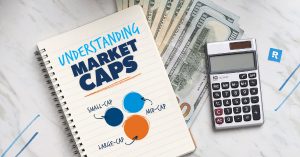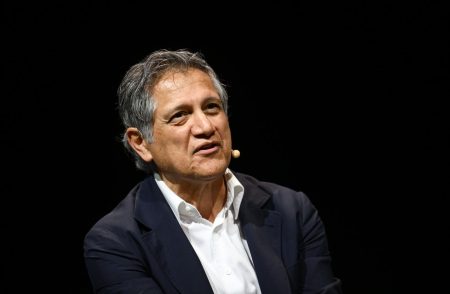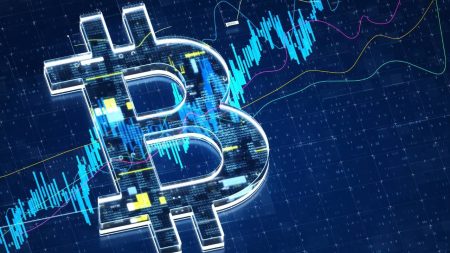The word “vibecession”—basically the idea that people are measuring the economy by feeling rather than by data—is back in the news. That’s because most Americans apparently think we’re in a recession, even though we aren’t.
It is, frankly, annoying to those of us who make our decisions on the data alone. But, as they say, it is what it is. So we’re going to go ahead and profit from it! Our tool of choice is a closed-end fund (CEF) that does something no ETF or regular stock could ever do: It “translates” our gains on US stocks into dividends.
The dangerous thing about a “vibecession” is that it’s easy to make mistakes as the media pushes a fear-based narrative. The last time the word “vibecession” was being thrown around, in 2022, I heard of many people who sold based on fear.
I know I don’t have to say what kind of missed gains that would’ve resulted in. This chart of index funds for the NASDAQ (in purple) and the S&P 500 (in orange) sums it up.
In fact, we were well into the 2022 selloff when the word “vibecession” was coined. Its creator, Kyla Scanlon, said the “vibes” were bad then because in her words, among other things, “Around 15% of US renters are behind on their payments because of the unsustainable price increases the average person has faced this year.”
That sounds alarming until you remember that evictions were illegal in the US from the start of the pandemic to August 2021, and Scanlon said this in the middle of 2022. So it’s obvious she’s just pointing out that the stock of renters not paying their rent had built up due to a year and a half being able to stay in their accommodations rent-free.
In fact, the math works out almost perfectly: On average about 6% to 7% of renters fear eviction, and evictions weren’t possible for one year. Double the 6% to 7% average rate to account for the prior year’s 0% evictions and, voila, you’re at 15%, given the study’s 3.1% margin of error.
In other words, 2022’s spike in fear was definitely a “vibe,” and that vibe didn’t last long, as Census data shows.
Now, in 2024, we’ve got another attempt to claim a vibecession. Does it hold up? Currently, eviction fears are about 9% and seem to be dropping steadily (they’re down by 4% from the start of 2024), so that’s no longer an alarming data point. And the other data points don’t seem to be helping the recession argument, either.
Unemployment is down to 3.9%, a historically low level, and there’s no sign it’s anywhere near spiking. Moreover, the average American employee’s earnings are rising by about 4% per year, which is above the 3.5%-per-year inflation rate. Whenever salaries are rising more than inflation, you have a healthy economy.
That’s why US stocks have been soaring. It’s also why US markets have been outperforming those of other countries since 2022. In the chart below, we can see the S&P 500 (in purple) and the NASDAQ (in orange) clearly outrunning Europe—shown by the Vanguard FTSE Europe ETF (VGK) in blue; Japan, shown by the iShares MSCI Japan ETF (EWJ) in green; and Asia more broadly, shown by the Vanguard FTSE Pacific ETF (VPL) in pink.
America is one of the few countries where income growth is exceeding inflation and the largest growth sectors are also the highest-margin ones: semiconductors, media and technology. So US stocks are the place we want to be.
How long will this strong performance last? This chart is a pretty good indicator that American markets still have plenty of runway:
This data comes from Apollo Global Management, one of the biggest creditors working with medium-sized companies, where much of the economic action is. They see same-store sales at retail outlets rising at a pre-pandemic level—that is, at a strong and sustainable pace. So Americans aren’t just earning more, they’re spending more, and US companies are profiting.
A 9.7%-Payer Profiting From Today’s (Overly) Negative Vibes
Which brings us to a CEF nicely positioned to profit from this situation: the Liberty All-Star Equity Fund (USA), which focuses on high-quality US firms with strong cash flows. USA pays a 9.7% dividend as I write this, and it does something no ETF ever does: trades at a 2.5% discount to net asset value (NAV, or the value of its portfolio).
As members of my CEF Insider service know, these discounts are one of our main reasons for buying CEFs. They exist because CEFs generally have a fixed share count for their entire lives, so can (and regularly do) trade at different values in relation to their portfolios.
To say USA is well established would be an understatement: It was founded back in 1986 and has put up a stellar 3,000%+ return ever since.
Management has built this record on the strength of great firms that are directly benefiting from the income and spending trends of individual Americans and US companies—firms like Capital One Financial (COP), Visa (V) and, of course, today’s AI-powered performers, Microsoft (MSFT) and Nvidia (NVDA).
The beauty of investing in USA is that it essentially “translates” the profits from its stock gains into dividends by selling shares systematically, taking profits and strategically rotating the portfolio over the long term. (Its policy is to pay around 10% of NAV per year as dividends.)
This allows you to profit from stock-market gains without having to sell your shares. And since USA’s dividend (which does float a bit, due to changing NAV) has actually risen by 80% in the last decade, it’d be absurd to fear that this fund is unsustainable just because the yield is high. In fact, I’ve heard this fear about USA in the near decade I’ve written about CEFs, and it’s never come to fruition.
And of course, there are plenty of other equity CEFs out there beyond USA, too, giving you plenty of other ways to access US stocks and get most of your gains in dividend cash, too.
Michael Foster is the Lead Research Analyst for Contrarian Outlook. For more great income ideas, click here for our latest report “Indestructible Income: 5 Bargain Funds with Steady 10.9% Dividends.”
Disclosure: none
Read the full article here










